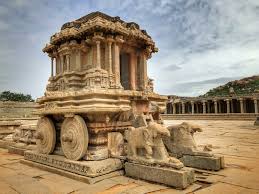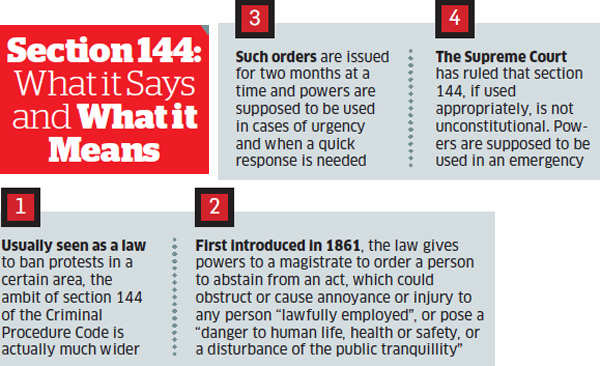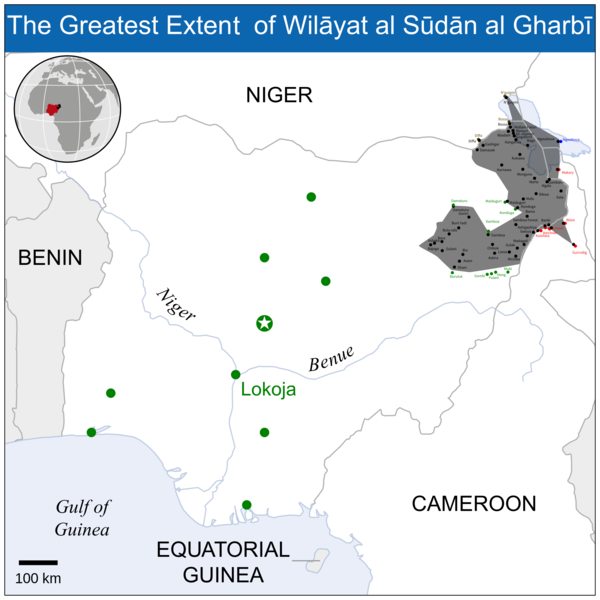Contents:
- GST on mobile phones increased to 18%
- Hampi, key attractions in Kodagu among places closed for a week
- MPs’ panel concerned at Defence fund shortfall
- Escaping Boko Haram after being hired to bomb
- It’s wrong to presume that mergers will solve banks’ woes
- TIFR study reveals role of glucose in regulating liver functions, ageing
- The time is right for OneHealth science
- Iron rain on exoplanet
- Superhydrophobic coating to save metallic surfaces
- Trial shows success in treating drug-resistant TB
GST ON MOBILE PHONES INCREASED TO 18%
Focus: GS-III Indian Economy
Why in news?
Mobile phones are likely to get costlier, with the Goods and Services Tax (GST) Council on 14th March 2020 deciding to increase the rate on mobile phones and specific parts to 18% from the current 12%, from April 1.
The decision was taken not to increase the prices but to correct the inverted structure of duty on some products wherein the rate of tax paid on inputs purchased is more than the rate of tax on finished products on outward supplies.
What is GST?
Goods and Services Tax (GST) is a comprehensive indirect tax on manufacture, sale, and consumption of goods and services throughout India. GST would replace respective taxes levied by the central and state governments.
- It is a destination-based taxation system.
- It has been established by the 101st Constitutional Amendment Act.
- It is an indirect tax for the whole country on the lines of “One Nation One Tax” to make India a unified market.
- It is a single tax on supply of Goods and Services in its entire product cycle or life cycle i.e. from manufacturer to the consumer.
- It is calculated only in the “Value addition” at any stage of a goods or services.
- The final consumer will pay only his part of the tax and not the entire supply chain which was the case earlier.
- There is a provision of GST Council to decide upon any matter related to GST whose chairman in the finance minister of India.
What is GST Council?
- It is a constitutional body for making recommendations to the Union and State Government on issues related to Goods and Service Tax.
- The GST Council is chaired by the Union Finance Minister and other members are the Union State Minister of Revenue or Finance and Ministers in-charge of Finance or Taxation of all the States.
- It is considered as a federal body where both the centre and the states get due representation.
- As per Article 279A (1) of the amended Constitution, the GST Council has to be constituted by the President within 60 days of the commencement of Article 279A.
HAMPI, KEY ATTRACTIONS IN KODAGU AMONG PLACES CLOSED FOR A WEEK
Focus: GS-I Art and Culture, Prelims
Why in news?
- The tourism sector continues to face a blow this holiday season, with most travellers putting off plans by choosing to stay safe in the light of COVID-19 threat and some key heritage places such as Hampi being closed for a week as part of precautionary measure.
- Ballari Deputy Commissioner ordered the closure of heritage sites in Hampi exercising powers vested under Section 144(3) of the Code of Criminal Procedure CrPC.
- The restrictions on entry of visitors to India has also contributed to the low footfall.
- Tourist attractions in Kodagu too will be closed for a week.
Hampi

- Hampi, also referred to as the Group of Monuments at Hampi, is a UNESCO World Heritage Site located in east-central Karnataka, India.
- It was the capital of Vijayanagara Empire in the 14th century.
- Located in Karnataka near the modern-era city of Hosapete, Hampi has been described by UNESCO as an “austere, grandiose site” of more than 1,600 surviving remains of the last great Hindu kingdom in South India.
- Hampi is situated on the banks of the Tungabhadra River in the eastern part of central Karnataka near the state border with Andhra Pradesh.
- The architecture is built from the abundant local stone.
- The dominant style is Dravidian.
Stone Chariot in Hampi
- The iconic Stone Chariot is actually a shrine dedicated to Garuda, built inside the Vittala Temple Complex.
- The massive sculpture of Garuda, Lord Vishnu’s escort once was seated atop the chariot but it is empty at the present date.
- The Hampi Chariot has earned its name among the other three famous stone chariots in India- One in Konark, Odissa, and the other in Mahabalipuram (Tamil Nadu).
Vittala Temple Complex
- The Virupaksha temple is the oldest shrine, the principal destination for pilgrims and tourists, and remains an active Hindu worship site.
- Parts of the Shiva, Pampa and Durga temples existed in the 11th-century; it was extended during the Vijayanagara era.
- The temple is a collection of smaller temples, a regularly repainted, 50-metre (160 ft) high gopuram, a Hindu monastery dedicated to Vidyaranya of Advaita Vedanta tradition, a water tank (Manmatha), a community kitchen, other monuments and a 750 metres (2,460 ft)-long ruined stone market with a monolithic Nandi shrine on the east end.
What is Section 144?

- Section 144 CrPC, a law retained from the colonial era, empowers a district magistrate, a sub-divisional magistrate or any other executive magistrate specially empowered by the state government in this behalf to issue orders to prevent and address urgent cases of apprehended danger or nuisance.
- The magistrate has to pass a written order which may be directed against a particular individual, or to persons residing in a particular place or area, or to the public generally when frequenting or visiting a particular place or area.
- In emergency cases, the magistrate can pass these orders without prior notice to the individual against whom the order is directed.
MPS’ PANEL CONCERNED AT DEFENCE FUND SHORTFALL
Focus: GS-III Internal Security
Why in news?
- The Parliamentary Standing Committee on Defence has expressed concern at the widening gap between projections and allocations in the defence budget impacting modernisation and has recommended a dedicated fund for committed liabilities and procurements.
- The shortfall in allocation has also effected setting up of three tri-service organisations and the operational readiness of the Andaman and Nicobar Command (ANC).
Details

- Such situation is not conducive for preparation of country to modern-day warfare, where possession of capital intensive modern machines are pre-requisite for not only tilting the result of war in our favour but also having a credible deterrence.
- Both the Navy and the IAF have a situation where their committed liabilities are more than their share of the capital allocation in the Budget.
- To offset this, the Services have been forced to defer payment of committed liabilities of the Defence Public Sector Undertakings (DPSU) among other measures.
- The implications of shortfall in miscellaneous expenditure include inability to operationalisation of Defence Space Agency (DSA), Defence Cyber Agency (DCYA) and Armed Forces Special Operations Division (AFSOD). Other implications are lower operational readiness of Andaman and Nicobar Command (ANC) ships due to impact on annual refit plans, maintenance of SIGINT (Signal Intelligence) equipment and administration of training institutes and operational units.
ESCAPING BOKO HARAM AFTER BEING HIRED TO BOMB
Focus: Prelims
Why in news?
As captives of Boko Haram, one of the deadliest terror groups on earth, women had been dispatched for the grimmest of missions. Hundreds of women in Nigeria have been recruited by Boko Haram as suicide bombers.
Boko Haram

- The Islamic State in West Africa or Islamic State’s West Africa Province, commonly known as Boko Haram is a jihadist terrorist organization based in northeastern Nigeria, also active in Chad, Niger and northern Cameroon.
- 2019 saw the further decline of Boko Haram and the loss of much of the territory it once reportedly controlled.
TIFR STUDY REVEALS ROLE OF GLUCOSE IN REGULATING LIVER FUNCTIONS, AGEING
Focus: GS-III Science and Technology, Prelims
Why in news?
- An enzyme that goes by the name SIRT1 is known to be associated with regulation of metabolic activities and also ageing and hence has become a target of therapeutics.
- A study by researchers from Tata Institute of Fundamental Research, Mumbai (TIFR) shows that glucose controls the function of SIRT1 directly.
- A shortage or absence of this control can lead to a diabetic-like state, while excess feeding and sustained low levels of SIRT1 can lead to obesity and enhanced ageing.
Health and feeding regimen
- There are many diseases related to high calorie content in the body, such as metabolic disorders as shown in animal studies.
- Studies have shown that metabolic diseases are associated with wrong feeding regimen, even in humans.
- Every organism has evolved so as to feed and then alternately fast, so it becomes important to understand this cycle.
- This cycle, known as the feed-fast cycle is a basic pattern and the metabolism related to this is largely taken care of by the liver.
- Glucose controls the functions of a protein SIRT1 which in turn maintains everyday feed-fast cycles and is also associated with longevity.
Diabetes
- Diabetes mellitus (DM), commonly known as diabetes, is a group of metabolic disorders characterized by a high blood sugar level over a prolonged period of time.
- Diabetes is due to either the pancreas not producing enough insulin, or the cells of the body not responding properly to the insulin produced.
There are three main types of diabetes mellitus:
- Type 1 diabetes results from the pancreas’s failure to produce enough insulin due to loss of beta cells. This form was previously referred to as “insulin-dependent diabetes mellitus” (IDDM) or “juvenile diabetes”. The loss of beta cells is caused by an autoimmune response. The cause of this autoimmune response is unknown.
- Type 2 diabetes begins with insulin resistance, a condition in which cells fail to respond to insulin properly. As the disease progresses, a lack of insulin may also develop. This form was previously referred to as “non insulin-dependent diabetes mellitus” (NIDDM) or “adult-onset diabetes”. The most common cause is a combination of excessive body weight and insufficient exercise.
- Gestational diabetes is the third main form, and occurs when pregnant women without a previous history of diabetes develop high blood sugar levels.
THE TIME IS RIGHT FOR ONEHEALTH SCIENCE
Focus: GS-III Science and Technology, Disaster Managament, Prelims
Why in news?
As India goes into emergency mode to tackle the potentially catastrophic impacts of the novel coronavirus (COVID-19), the ‘Kerala model’ is being widely cited as an example to emulate.
Kerala Model
- In 2018, Kerala reacted quickly and efficiently to tackle the Nipah virus outbreak and successfully managed to confine it to 23 cases.
- This success has been credited to the strong public health infrastructure and the political will to quickly seek help from a multidisciplinary team of national and international experts.
- The Kerala Nipah virus outbreak was thought to have come from fruit bats, a group of animals that may also be implicated in other more deadly outbreaks, possibly including the novel coronavirus.
Zoonotic Diseases
- These diseases, which “spillover” from animals to humans are referred to as zoonotic diseases, and represent more than 60% of emerging infectious diseases worldwide.
- The destruction of the natural environment, globalised trade and travel and industrialised food production systems have created numerous pathways for new pathogens to jump between animals and humans.
OneHealth – Necessity
- One Health is a collaborative, multisectoral, and transdisciplinary approach—working at the local, regional, national, and global levels—with the goal of achieving optimal health outcomes recognizing the interconnection between people, animals, plants, and their shared environment.
- Understanding this critical intersection between human health, domestic and wild animal health and the environment requires a new integrated framework — a paradigm called ‘OneHealth’.
- The frequency with which new pathogens are emerging or old ones are re-emerging across the world are alarm calls for greater transparency, cross-country collaborations, and enhanced national infrastructure and capacity for integrated OneHealth science.
Kyasanur Forest Disease and OneHealth
- Although OneHealth, as a conceptual entity, emerged relatively recently, a stellar example of OneHealth being operationalised in the field was seen in India in the late 1950s.
- It helped discover the source of Kyasanur Forest Disease (KFD), a highly dangerous haemorrhagic fever more threatening than COVID-19.
- It was locally called ‘monkey fever’ because of the links between monkey deaths and human infections in Shimoga District of Karnataka where it emerged in 1957.
- It took pioneering interdisciplinary work to bring together diverse entities like the Rockefeller Foundation and the Virus Research Centre (later the National Institute of Virology), Pune, the World Health Organization (WHO) and the Bombay Natural History Society.
- As successful as the epidemiological investigation into KFD was, it largely remained an isolated example.
- This model of cross-sectoral collaboration did not set the tone for further research along similar lines or fructify into readying our public health system to address zoonotic diseases.
- To our great loss, everyone slipped back into their silos.
- Many decades later, India is yet to operationalise a true OneHealth policy.
IRON RAIN ON EXOPLANET
Focus: GS-III Science and Technology
Why in news?
The exoplanet, named WASP-76B, is said to have been witnessing iron rain when the metal vapour condenses into clouds.
Exoplanet
- An exoplanet or extrasolar planet is a planet outside the Solar System.
- The first possible evidence of an exoplanet was noted in 1917, but was not recognized as such.
- There are many methods of detecting exoplanets: Transit photometry and Doppler spectroscopy have found the most, but these methods suffer from a clear observational bias favoring the detection of planets near the star; thus, 85% of the exoplanets detected are inside the tidal locking zone.
WASP-76 b
- WASP-76 b is a bizarre “ultrahot Jupiter” type exoplanet that lies about 640 light-years from the sun, in the constellation Pisces.
- WASP-76 b was discovered in 2013.
- The planet is about as massive as Jupiter but nearly twice as wide, likely because the massive radiation loads the exoplanet receives from its host star puff up its atmosphere considerably.
SUPERHYDROPHOBIC COATING TO SAVE METALLIC SURFACES
Focus: GS-III Science and Technology
Why in news?
- Fascinated by the beauty of water rolling off a lotus leaf, a team of chemical engineers has now created a similar superhydrophobic coating that can be used to save steel from rusting.
- The team from the Indian Institute of Technology (Indian School of Mines), Dhanbad, and Ohio State University used polyurethane and silicon dioxide nanoparticles to create the coating which can be easily spin-coated on steel.
Superhydrophobic
- A hydrophobic coating is a thin surface layer that repels water.
- It is made from hydrophobic (ultrahydrophobicity) materials.
- Droplets hitting this kind of coating can fully rebound.
- Generally speaking, superhydrophobic coatings are made from composite materials where one component provides the roughness and the other provides low surface energy.
- Superhydrophobic coatings rely on a delicate micro or nano structure for their repellence—this structure is easily damaged by abrasion or cleaning; therefore, the coatings are most used on things such as electronic components, which are not prone to wear.
- Objects subject to constant friction like boats hulls would require constant re-application of such a coating to maintain a high degree of performance.
TRIAL SHOWS SUCCESS IN TREATING DRUG-RESISTANT TB
Focus: GS-III Science and Technology
Why in news?
A small trial (Nix-TB) undertaken at three sites in South Africa to test the safety and efficacy of three oral drugs — bedaquiline, pretomanid and linezolid — in 109 patients (57 males and 56 females were HIV positive) with extensively drug-resistant TB (XDR-TB) and multidrug-resistant TB (MDR-TB) showed encouraging results — treatment success rate was 90%.
The favourable results for Tuberculosis held true regardless of the HIV status of the patients.
Tuberculosis
- Tuberculosis (TB) is an infectious disease usually caused by Mycobacterium tuberculosis (MTB) bacteria.
- Tuberculosis generally affects the lungs, but can also affect other parts of the body.
- Most infections do not have symptoms, in which case it is known as latent tuberculosis.
- The bacteria that cause TB are spread when an infected person coughs or sneezes.
- In 15–20% of active cases, the infection spreads outside the lungs, causing other kinds of TB.
What is Multi drug resistance?
- Multiple drug resistance (MDR), multidrug resistance or multi-resistance is antimicrobial resistance shown by a species of microorganism to multiple antimicrobial drugs.
- The types most threatening to public health are MDR bacteria that resist multiple antibiotics; other types include MDR viruses, parasites (resistant to multiple antifungal, antiviral, and antiparasitic drugs of a wide chemical variety).
- Recognizing different degrees of MDR, the terms extensively drug resistant (XDR) and pandrug-resistant (PDR) have been introduced.





